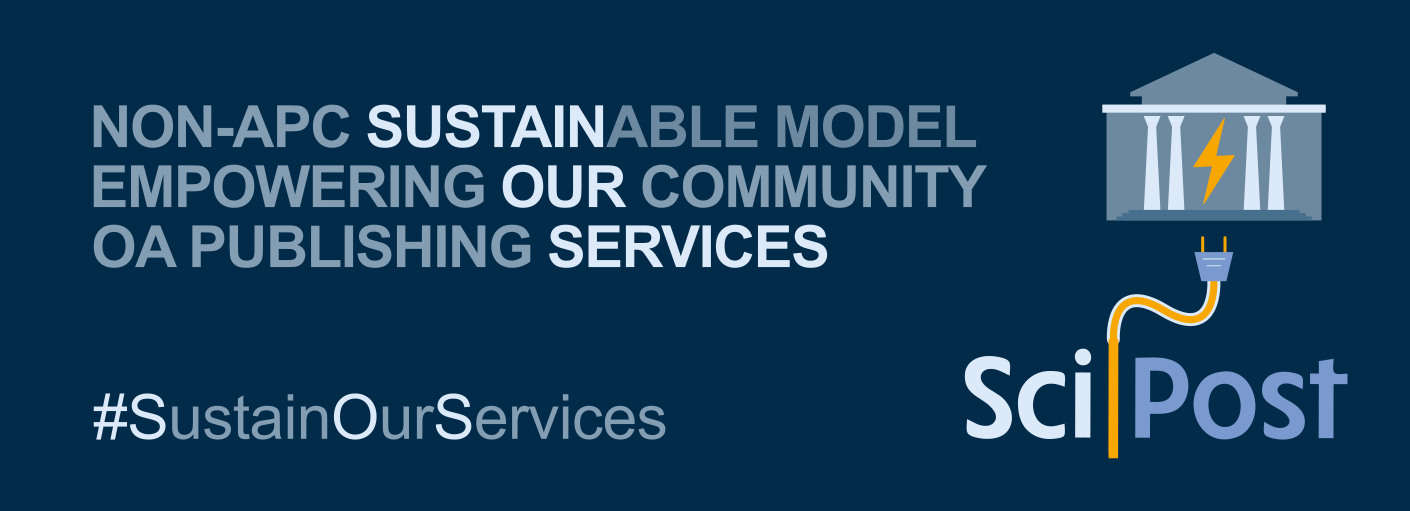Things you should know about SciPost
Posted on 2024-03-07 by Jean-Sébastien Caux
If you are not familiar with SciPost, this post will provide you with a quick overview:
- What is SciPost's purpose?
- What is the scale of our operations?
- Editorially, what distinguishes SciPost?
- Business-wise, what distinguishes SciPost?
This post is part of our Sustain Our Services Campaign.

What is SciPost's purpose?
SciPost's mission is to implement Genuine Open Access publishing, whose principles are:
community ownership
open infrastructure
copyright to authors
open access
open citations
fee free
non profit
open finances
academic editing
One way of expressing this is to say that it's publishing, as a typical academic would conceive it.
What is the scale of our operations?
You can look for example at our blog to see our yearly lookbacks. For 2023, we published 748 papers. Since our start in 2016, we have put more than 2600 papers out of the door (as a comparison, this represents 5x as many papers as Open Research Europe). Currently, the vast majority of our publications are in the field of Physics. Given the resources, we'd like to extend this to other fields (see a possible vision for our future here).
Editorially, what distinguishes SciPost?
Editorial workflows for all our Journals are run by professionally active academics assembled into field-specific Editorial Colleges supported in their work by our team. We follow a very thorough editorial procedure (perhaps the most demanding in the whole industry) in which all decisions are taken by academic community members. Refereeing occurs openly (contents of reports are openly visible; referees can elect to remain anonymous).
Business-wise, what distinguishes SciPost?
SciPost's business model is the antidote to APCs (Article Processing Charges).
In one phrase: we don't charge authors, we don't charge readers, we don't send bills to anybody for our services, and we certainly don't make any profit; we are an academic community service surviving on donations coming primarily from Organizations which benefit from our activities.
We work using our PubFractions system (see the bullet points summary) summarized as:
for each published paper, we add a relation to the benefitting academic organizations (author affiliations, funders, etc)
for each published paper, a unit weight is split among these benefitting organizations
separately, on a yearly basis, we determine our initiative's total operational expenditures
the yearly total operational expenditures are divided by the yearly number of publications, giving an average cost per publication (2023: 495 euros) detailed on our APEX page
all data is made publicly available; benefitting organizations can see their benefit, and are encouraged to support our operations accordingly.
What we claim to demonstrate is that high-quality open access publishing doesn't have to break the bank, and that what we implement is a workable, more affordable and equitable alternative.
